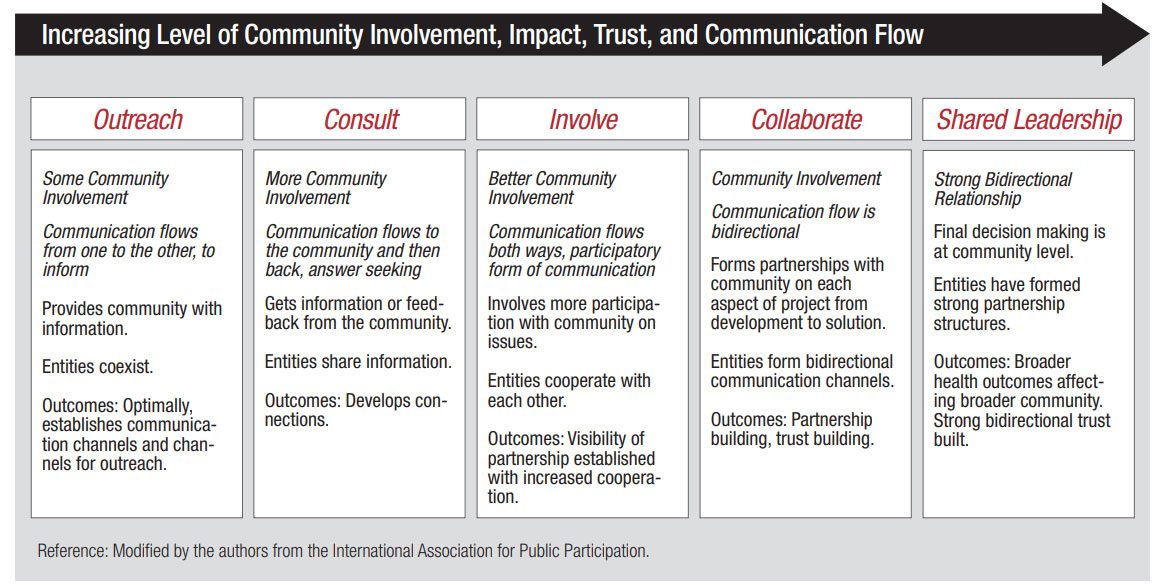What to know
Community engagement can involve a variety of partners and may take place across different settings. The practice of community engagement can serve as a stepping-stone for long-term partnerships and future collaborations. The positive impacts of community engagement can be felt in the community and across different sectors of society.

Section Overview
Community engagement can take many forms, and partners can include organized groups, agencies, institutions, or individuals. Collaborators may be engaged in health promotion, research, or policy making. Community engagement may be defined as:
…the process of working collaboratively with and through groups of people affiliated by geographic proximity, special interest, or similar situations to address issues affecting the wellbeing of those people. It is a powerful vehicle for bringing about environmental and behavioral changes that will improve the health of the community and its members. It often involves partnerships and coalitions that help mobilize resources and influence systems, change relationships among partners, and serve as catalysts for changing policies, programs, and practices (CDC, 1997, p. 9).
While community engagement may be achieved during a time-limited project, it frequently involves — and often evolves into — long-term partnerships. As shown below, the community engagement continuum may inspire future collaborations to address principal determinants of health.

Why practice community engagement?
Some benefits of community engagement include:
- improved study design and delivery,
- recognition of knowledge and skills from the public,
- enhanced understanding of the community and their health,
- increased organizational capacity for community organizations, and more.

